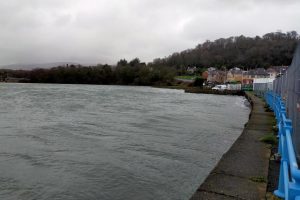Social media enthusiasts are, in essence, ‘ruining’ our cherished sites,” lamented a caver, as a vast amount of rubbish was recently extracted from a 19th Century mine. Anthony Taylor voiced deep concern over the surge of visitors attracted by a viral YouTube video showcasing abandoned cars in the Gwynedd quarry, which garnered over six million views. Subsequently, Instagram was flooded with hundreds of snapshots of the “car graveyard.” However, alongside these images, litter and graffiti were left behind by the photographers.
“These sites possess a unique beauty, and it’s disheartening to witness their degradation,” remarked Mr. Taylor, 42, hailing from Aberystwyth, Ceredigion. He expressed his dismay, stating, “It seems that Instagram is hastening the decline of many such places,” noting how visitors often arrive, snap a picture, and then hastily depart, leaving behind a trail of mess.
Gaewern slate mine, nestled on private land near Corris Uchaf, boasts a rich history dating back to 1820, with mining operations persisting until the 1970s following a merger with the nearby Braichgoch slate mine. Mr. Taylor reminisced about his initial visit in 2022, recalling the surreal sight of rusting cars and televisions dumped into one of the mine’s chambers, illuminated by shafts of sunlight.
“It’s an otherworldly environment, perhaps one of the most peculiar places globally,” he mused. “How often does one encounter hundreds of cars underground, bathed in sunlight?”
Yet, accessing this marvel proves challenging, with the entrance strewn with discarded bin bags employed by visitors attempting to keep their feet dry. “Approximately 30 feet in, the spray painting begins, and it’s disheartening,” Mr. Taylor remarked. He described encountering worsening graffiti as he progressed towards the cars, coupled with an increase in litter, including discarded glow sticks and human waste. “Upon reaching the end, the sight of numerous boats and inflatable dinghies strewn about was appalling,” he added. “It’s a distressing scene, truly saddening.”
The allure of such sites stems from their online portrayal, enticing visitors with promises of extraordinary sights. Hence, Mr. Taylor questioned the rationale behind desecrating these locales, pondering, “Why tarnish what draws people here in the first place?” In response, he and fellow cavers undertook a significant clean-up effort on March 22nd, aided by six volunteers. Together with another group associated with the YouTube channel Hell on Earth, they removed approximately 30 discarded dinghies.
“These actions were necessary,” affirmed Mr. Taylor, expressing concern over the actions of individuals he labels as “influencers” who frequent these sites. “These places hold inherent value, yet some seem intent on destroying them for everyone else.”
He advocates for raising awareness about the historical significance of abandoned mines, fearing the eventual closure of sites like Gaewern due to ongoing abuse. “Should these transgressions persist, these treasures will be lost to us forever.”
Reflecting on his numerous expeditions to abandoned mines across mid-Wales, Mr. Taylor recounted discoveries ranging from a child’s footprint to ancient artefacts such as hobnail boots and miners’ tools. “If one fails to recognise the value in these findings, then what hope remains?” he questioned. “While one might assume such appreciation to be inherent, it appears we must actively educate in this modern era.
















